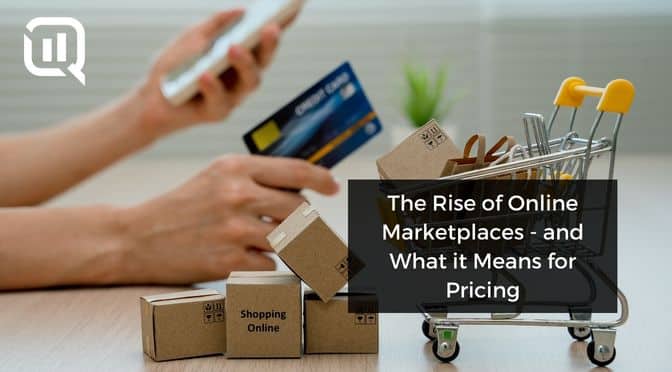The Rise of Online Marketplaces
If you were looking to purchase a product online, any product, would you prefer to purchase that product from a first-party retailer like Best Buy, Walmart or Michaels, or would you sooner pick the product sold by a third party listing it for sale on Best Buy, Walmart or Michaels’ websites? If you are like me, you would choose to purchase from a company that you recognize, an established retailer with decades of brand trust behind it. Even if the third-party seller has five hundred 5-star reviews, and is offering a lower price than the 1st retailers.
To my great dismay, not everyone thinks the same way as me, as marketplace offerings are becoming commonplace in the retail e-commerce World.
There are companies that are entrenched in the marketplace e-commerce space, players like eBay, Amazon, and Walmart have long offered their own products for sale alongside those sold by third-party businesses. Amazon built a gargantuan e-commerce platform partly on the backs of the individual distributors and resellers that comprise the bulk of their product assortment. But why should these giants be the only ones to reap the rewards of hosting a marketplace?
The rise of hosted marketplaces
These are reflections that retail executives had long before me, as participation in the recommerce market is a priority for traditional retail stores like Michael’s and Best Buy Canada.
The Canadian extension of the tech giant Best Buy has long since offered a marketplace platform, encouraging third parties to list their products for sale in exchange for a percentage of sales. 2016, the first year that Best Buy Canada’s marketplace was live, 1 in 12 transactions were fulfilled by a third-party seller. By the end of 2020, that ratio was closer to 1 in 4.
Michael’s, one of North America’s largest art and crafts stores, just launched its own marketplace platform earlier this year. In doing so It ballooned its total SKU inventory from 250,000 SKUs to over a million. By giving sellers the opportunity to sell arts & crafts-adjacent products that Michael’s doesn’t have to store itself in warehouses, they become more resistant to supply chain disruptions.
I think the main reason it makes sense for big box retailers to pursue a marketplace strategy is when that retailer has a specialization or vertical that they want to be the one-stop shop for. I talked with a customer recently who carries huge volumes of dropship SKUs on their website, many of which they only sell five in a year. They do this to support their value proposition as a retailer that carries every sort of office supply product a consumer may ever require. Because of marketplaces, Best Buy Canada is now able to sell every tech product imaginable and Michaels’ can host an even larger e-commerce platform dedicated to whichever craft input a scrapbooker or artist could desire.
These retailers don’t have to worry about the carrying cost of slow-moving inventory, they are able to advertise an expanded assortment, plus they are able to collect a small cut of each sale! It’s no wonder that this is becoming commonplace in the industry, with more retailers joining the business models that Amazon and Walmart have run for years.
Recommerce Considerations
The growth of recommerce is another reason marketplaces can help a major retailer distinguish itself. Recommerce sells previously owned items through online marketplaces to buyers who reuse, recycle or resell them. It is on a meteoric rise, as it’s a major characteristic of a cohort of the American population that accounts for 20% of its citizenry but nearly 40% of its retail purchases: Generation Z. Gen Z’s shopping patterns involve a consciousness of sustainable purchases. Thrifting, trash nothing communities as well as Facebook marketplace exchanges are all examples of this. Right now recommerce websites like Mercari, Poshmark and Depop own substantial segments of this market, but that share isn’t set in stone.
Retailers are not ignorant of this trend, as according to Square, 43% of retailers currently or will soon be marketing differently to Gen Z. That marketing focus is of paramount importance, as traditional retail chains risk being labeled as unsustainable fast fashion outlets like Shien which generate massive amounts of clothing waste. In addition to the brand reputation risks, there is also the simple fact that if a whole cohort of consumers are engaging in recommerce, purchasing items that are not new, stores that only sell brand new items won’t participate, losing out on revenue in that market.
Pricing
If you are an e-commerce pricing analyst or category manager, and your SKU assortment just increased 4x by adding a marketplace, how are you going to price all of that? Sure, most of the new third-party retailers make their own pricing decisions, with their own bottom-line goals in mind. But a retailer spending the resources to host that marketplace should certainly provide at least pricing recommendations, at the very least to avoid cannibalization of their own items by a lower-priced marketplace seller.
Additionally, that same e-commerce pricing analyst has, to this point, only compared their products to first-party products at other retailers. Since so many big box stores are adopting marketplaces, what does that mean for their pricing strategies? Do they now assess the marketplace against their own? When advising their third-party partners driving sales on the marketplace, do they recommend pricing based on the aggregate 1st party price, marketplace price, or a combination of both?
Like I said above, opening a marketplace seems like a good strategy on the part of the retailer executive team, but what does this strategy mean for the thousands of e-commerce managers working for those retailers that now need to find a way to balance the competing demands of several go to market pricing strategies.
I would love to hear your thoughts on this matter! Email me at cschneider@ql2.com to start a conversation on the challenges of third-party marketplace pricing.

Helping product/merchandising teams identify pricing gaps to maximize sales and profitability.

